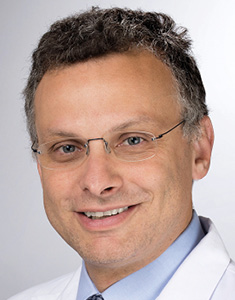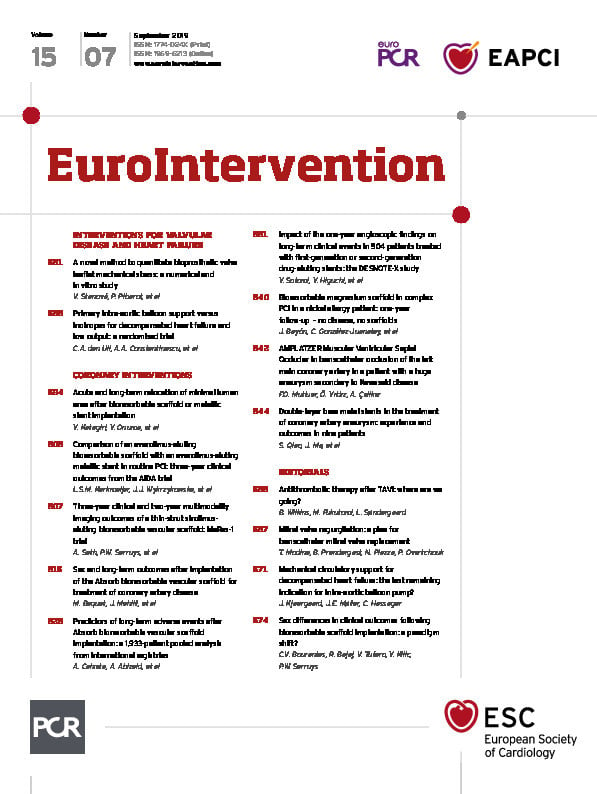
In recent years, cardiac surgery has experienced an unprecedented crisis. Once the “lion king” of the forest, undisturbed owner of structural interventions, the cardiac surgeon has lost his/her exclusivity advantage. Catheter-based structural interventions are emerging as the first-line option for many patients, and more will come in the future.
Is cardiac surgery becoming obsolete, will it disappear? Probably not, but there is a need for a dramatic change to avoid extinction! There is a risk of losing the important contribution of surgeons to the field, and the knowledge base developed over the years –a fundamental heritage for the years to come. We need to protect these endangered professionals to preserve the biodiversity of the cardiovascular medicine environment.
Cardiac surgeons are not immune to obsolescence. We are all destined to become out of date. Extinction becomes a possibility when individuals are unable to adapt to change and lack the courage to take some risks. That’s life! The surgical community should reflect on its own responsibilities: faced with the evident progress in the field of catheter-based structural interventions, most cardiac surgeons have been reluctant to embrace the change. They have strongly challenged the new endovascular technologies, declaring themselves to be paladins of tradition and patient safety. It is a story that repeats itself…the reactionary approach of surgeons in recent years was not different from the one faced by the early pioneers of cardiac surgery in the early 1950s, when an open heart procedure had a risk equivalent to the flip of a coin.
It is easy to understand the motivations of “conservativism”. Following many years of training, practice, and hard work to achieve the necessary level of competence and skills to become a good cardiac surgeon, it is normal to become reactionary to change. At the time we decided to engage ourselves in this pathway, being a cardiac surgeon was a privilege. The first generation of cardiac surgeons was involved in the most advanced technology innovation endeavour, in a historical framework of challenges and positivity, right after the Second World War, in parallel with the conquering of the moon. The pioneers of cardiac surgery have contributed enormously to modern cardiovascular medicine. They developed treatment options and nurtured the field with new questions and new needs. Cardiology has also profited from them. It became a profession independent from internal medicine and, thanks to cardiac surgery, subspecialties were further developed, including interventional cardiology, which at the beginning was mainly devoted to diagnostics at the service of surgical indications….
When I started my training in cardiac surgery, in the early 1990s, interventional cardiology was already a relevant alternative to surgery. However, no one would have expected that 30 years later catheter-based technologies would have become mainstream, not only in the field of coronary artery disease, but also in structural disease.
In the late 1990s, I had the privilege of being involved in the early development of first-generation endovascular valve therapies. Immediately I realised that endovascular treatment had the potential to be superior to open surgery for a number of reasons –the less invasive nature of the devices, the avoidance of the cardiopulmonary bypass and of heart ischaemia, etc. But, above all, image-guided, beating heart procedures offered the great advantage of operating under physiologic conditions. A new dimension was available for interventions: monitoring the effect of the interventions in real time1. I spent the next years developing a number of endovascular procedures with the clear feeling that catheter-based structural interventions were “the next thing”…
I have been privileged. I had the unique opportunity to observe this evolution from a special perspective. As a fully trained cardiac surgeon with a busy practice, I had the privilege to become “cross-trained” in interventional cardiology by the best interventionalists in the field: Colombo, Vahanian, Webb, Leon, and many others. For me, it has been clear from the very beginning: catheter-based procedures are the natural evolution of surgery. I like to consider them not “other than surgery”, but rather surgery 2.0. In many ways they are better than surgery because they simplifiy the approach, and they add new dimensions to the treatment options such as real-time monitoring, a staged approach, physiology-guided interventions, and so on.
However, first and foremost, I realised that surgeons and interventional cardiologists are very similar: they are brothers divided at birth.
As a consequence of my hybrid position, I spent most of my time between the operating room and the cath lab. I met a great number of inspiring interventional cardiologists and imagers, individuals coming from different angles but sharing the same passion for cardiovascular medicine. Thanks to their support, I have been privileged to incorporate in my professional skill set a mix of surgical and interventional techniques, and “way of thinking”. Today I can offer my patients the full spectrum of therapies, without any personal bias. I am one of the few “hybrid” surgeons around the world with these skills.
Hybrid surgeon…, I hate this nomenclature! We use the word “hybrid” to describe something that cannot be categorised in an established description. It is generally associated with something undefined, difficult to locate in the system, and therefore often unwelcome.
Hybrid figures are important at the beginning of a new era to allow easier communication among individuals with different backgrounds, similar to a “Rosetta stone of knowledge”. I have been privileged to be at the right place, at the right moment, when the disruptive innovation of catheter-based interventions was just starting. Similar to what happened to those who had the privilege to work with Cooley or Gruentzig, I was confronted early with the rise of a new field –a privilege supported by an open mind, lack of fear to enter a new world, full of open issues, and highly debated by the conservatives.
During these years I not only learned the value and the potential of the new technologies, the challenges of innovation but also the importance of teamwork and of diversity. The early teams were bonded by the same passion and curiosity, not yet affiliated with the clear chance of success, not influenced by economic or career advantages. The first spontaneous Heart Teams needed no regulations. They were super-bonded and were highly criticised by others who initially did not see the potential of the new therapies or did not want to take the risk of being pioneers. These were the same “conservatives” who came along a few years later claiming the right to be in charge of the new therapies, but only after the early learning phase had been overcome.
It is from the heritage of these years that I live with the strong belief that surgeons and interventional cardiologists are twins separated at birth –brothers in arms, with an interventional attitude, passionate for cardiovascular medicine, technology, and innovation. Structural and cultural barriers have created academic and clinical silos –one breed coming from surgery, the other from internal medicine. Is this separation still valid? Is cardiology internal medicine? Is cardiac surgery a division of general surgery?
For many years no one has tried to answer this question. Now it is time to react. In the era of personalised medicine, of patient-centred care, of integrated services, our education should be able to provide the correct preparation for cardiovascular medicine doctors of the future. We need cardiac surgeons who think like cardiologists, just as today’s interventional cardiologists are cardiologists who think like surgeons. It is time to deliver integrated education for the specialists of the future, to generate “thinking” specialists, a new generation of competent physicians who can tackle the challenges of the future and bring cardiovascular medicine to the next level. There is a need to give a definition to “hybrid”: no longer “hybrid”, but modern interventionalists with integrated competencies and skills to deliver best practice. I wish I could offer my fellows the same experience I was lucky enough to enjoy in my career: the opportunity to be exposed to a wider perspective, irrespective of academic, cultural and organisational barriers. Unfortunately, my personal educational journey is difficult to replicate, but we need to learn from it. Mixing the genes is an element of evolution; preserving biodiversity is crucial to avoid extinction. Let’s unify our learning pathways, let’s create a school of cardiovascular medicine to develop the heart specialists of the future.
It is time to change our education. It is time to react; our patients deserve it, our young colleagues need it. We have revolutionised the therapies; we are restructuring our clinical units. It is now time to focus and rethink education. There is no need to get rid of traditional cardiac surgery training, but it needs to be incorporated in the new environment and the next generation of cardiac surgeons has to be exposed to a modern system in which they can work with pride and recognition. This is only achievable if the community invests time and resources in this important effort of mixing innovation and tradition, medicine and surgery, for a common goal, namely the best for our patients.
The new comes… the old goes… the new will become old one day… adopt a surgeon today, it will save your specialty tomorrow. Support the Heart Team concept - there is a lot to learn from each other in order to develop the professionality of the future.
Conflict of interest statement
F. Maisano is a consultant for Abbott Vascular, Medtronic, Edwards Lifesciences, Perifect, Xeltis, Transseptal Solutions, Magenta and Cardiovalve, has received grant support from Abbott Vascular, Medtronic, Edwards Lifesciences, Biotronik, and Boston Scientific, has received royalties from Edwards Lifesciences and 4Tech, and is co-founder of Transseptal Solutions, 4Tech, and SwissVortex.

